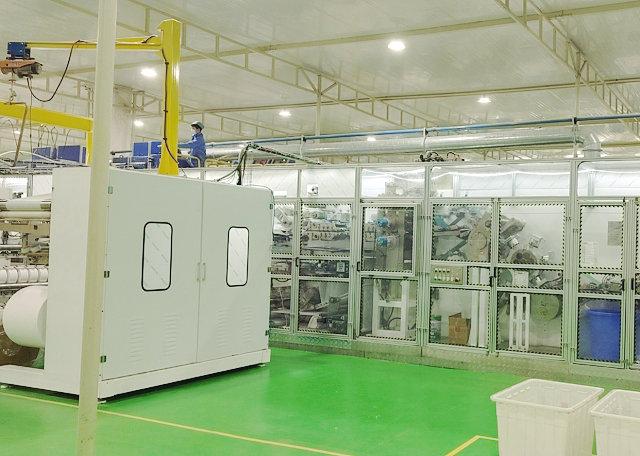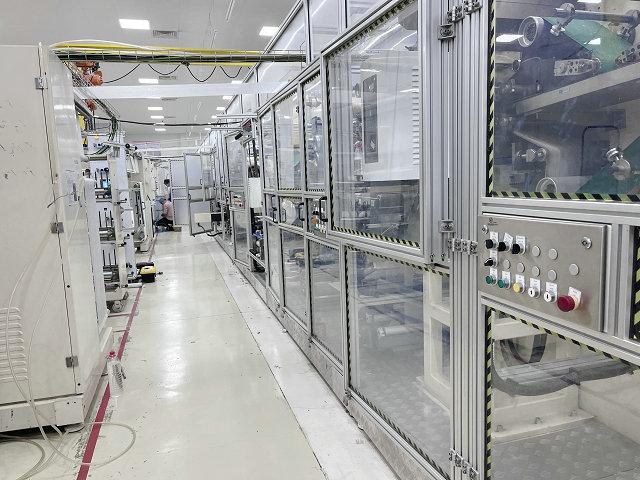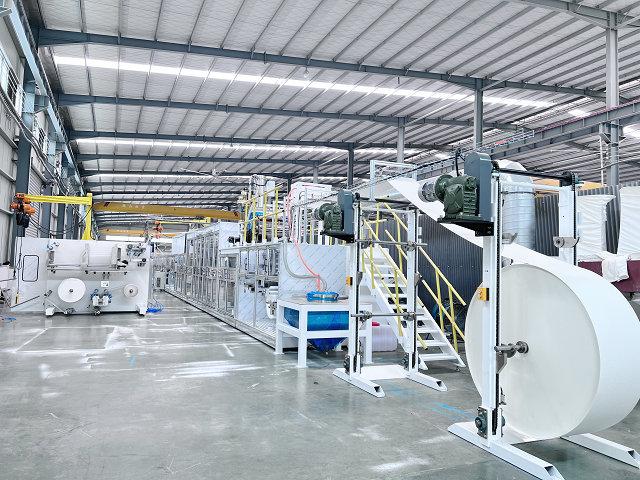Author:Haina Machinery Factory FROM:Diaper Machinery Manufacturer TIME:2024-11-22
Maintaining a sanitary pad machine is crucial for ensuring consistent production quality and efficiency. These machines are complex pieces of equipment, designed to manufacture sanitary pads at high speeds while maintaining hygiene standards. Regular maintenance helps prevent breakdowns, reduces operational costs, and extends the lifespan of the equipment. In this article, we will explore the key maintenance requirements for a sanitary pad machine, detailing various aspects such as daily checks, weekly inspections, lubrication needs, and troubleshooting common issues.

Daily maintenance checks are essential for keeping the sanitary pad machine running smoothly. Operators should start each day by inspecting the overall condition of the machine. This includes checking for any signs of wear or damage, ensuring all safety guards are in place, and verifying that emergency stop buttons are functioning correctly. Additionally, operators should clean the machine to remove dust, debris, and any leftover materials from the previous production run. This cleanliness not only ensures better hygiene but also prevents contamination in the products being manufactured.
In addition to daily checks, weekly inspections play a vital role in the upkeep of a sanitary pad machine. During these inspections, technicians should perform a more thorough examination of the machine's mechanical parts. This includes checking belts, chains, and gears for signs of wear and tear. It is also important to inspect electrical connections and wiring for any fraying or damage. Weekly inspections may also include calibration of sensors and other electronic components to ensure accurate functioning, which is crucial for product quality.
Lubrication is a critical aspect of maintaining a sanitary pad machine. Proper lubrication reduces friction between moving parts, preventing overheating and excessive wear. Operators should refer to the manufacturer’s guidelines to identify specific lubrication points and recommended lubricants. Typically, grease and oil should be applied regularly to bearings, gears, and other moving components. A lubrication schedule should be established based on the machine's usage frequency, ensuring that all parts receive adequate lubrication without overdoing it, which could attract dirt and debris.
Another important maintenance requirement is the timely replacement of worn or damaged parts. Components like blades, filters, and rollers can degrade over time, affecting the machine's performance and the quality of the sanitary pads produced. Operators should maintain an inventory of spare parts and schedule regular assessments to identify which components need replacement. Implementing a just-in-time inventory system can help ensure that necessary parts are available when needed, minimizing downtime during production.
Even with regular maintenance, issues can still arise. It is essential for operators and maintenance personnel to be equipped with troubleshooting skills. Common problems might include jamming, inconsistent pad sizes, or machine misalignment. Operators should be trained to identify these issues quickly and take corrective action, whether that means clearing jams, recalibrating the machine, or adjusting settings. Establishing a troubleshooting guide can help streamline this process and reduce the time spent on resolving issues.

Staff training is a crucial element in the maintenance of a sanitary pad machine. Operators and maintenance staff should be thoroughly trained in the operation and care of the machine, including understanding the technical specifications and maintenance requirements. Regular training sessions can help keep staff updated on best practices, new technologies, and procedures. This investment in human resources not only enhances machine efficiency but also fosters a culture of safety and responsibility within the workplace.
Maintaining detailed records of all maintenance activities is essential for effective management of a sanitary pad machine. Documentation should include daily checklists, inspection reports, lubrication schedules, and records of any repairs or part replacements. This information can help identify trends in machine performance, allowing for predictive maintenance practices that anticipate issues before they become significant problems. Furthermore, having a comprehensive history of maintenance activities can be valuable during audits or compliance checks.

In conclusion, the maintenance requirements for a sanitary pad machine are extensive and require a systematic approach to ensure optimal performance and longevity. Daily checks, weekly inspections, proper lubrication, timely replacement of parts, effective troubleshooting, and comprehensive staff training are all integral components of a successful maintenance strategy. By prioritizing these maintenance activities, manufacturers can enhance productivity, reduce costs, and maintain the high-quality standards expected in sanitary product manufacturing. Investing in regular maintenance pays off through improved efficiency and reduced risks of downtime, ultimately contributing to a more successful production operation.
